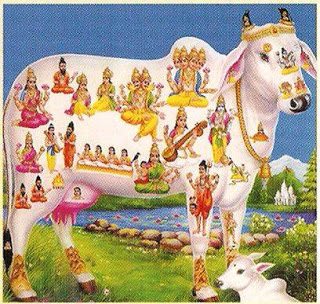[ by Charles Cameron — a term from cultural anthropology as a marker for jihadist intensity ]
.
**
Ahmed S. Younis, Deputy Special Envoy and Coordinator, Global Engagement Center, U.S. Department of State, during the George Washington University’s Center for Cyber and Homeland Security event, Toward a Global Partnership to Counter Online Radicalization and Extremism, the Understanding Online Counter-Messaging panel, March 28,2017, a little after the 2 hr 03’50” mark in the video above:
I would posit that terrorism and extremism by their definition are liminal states. They are defined by their inbetweenness. And often when we see someone who is radicalizing towards terrorism, they are shifting in a crevice between a series of pieces of life that bring them to a place where this type of activity appears as a solution or an option for their frustration with lived experience. And we lose, as people who want to fight this effort, when we try to pretend this is all about shariah and fiqh and issues of Islam. .. If radicalizing is sexy, then that sexiness is by definition interdisciplinary, and we have to meet people in the liminality of their moment. .. Reality is complex, and it is interdisciplinary.
**
My eyes prick up — I know, “pricking up” is really a phrase that’s apt for the ears, but I think it should apply to the eyes as well — my eyes do a double-take when I see the word “liminal”. It signals importance.
I’ve talked about liminality before, lightheartedly [Liminality I: the kitsch part] and more seriously [Liminality II: the serious part] — but by way of a reminder, I’ll just quote two stories from the latter, along with this definition:
liminality is between-ness — it’s what happens on thresholds
Here are the two stories:
Something pretty remarkable happened as 1999 turned into 2000 — something liminal. And it happened aboard the USS Topeka, SSN-754 (below):

USS Topeka, credit: United States Navy, released ID 090623-N-1126G-005
The Associated Press reported:
Its bow in one year, its stern in another, the USS Topeka marked the new millennium 400 feet beneath the International Dateline in the Pacific ocean. The Pearl Harbor-based navy submarine straddled the line, meaning that at midnight, one end was in 2000 while the other was still in 1999… The 360-foot-long sub, which was 2,100 miles from Honolulu, Hawaii, straddled the Equator at the same time, meaning it was in both the northern and southern hemispheres. Some of the 130 crewmembers were in Winter in the North, while others were in Summer in the South…
Sitting pretty on the threshold between two millennia, two centuries, two decades, years, seasons, months, days and hemispheres was an extraordinarily liminal idea — as the two-faced January is a liminal month — and I think illustrates effectively the terrific power of the liminal to sway human thinking
Navy commanders in charge of billion dollar ships seldom get up to such “fanciful” behaviors!
And if we might turn from the contemporary US Navy and its submarine to ancient Indian mythology and Hindu religion for a moment:

Narsingh avatar depicted in Nepali dance, credit: Navesh Chitrakar, Reuters / Landov
The story of Narsingh (above), the fourth avatar of Vishnu in Vaisnavism, also captures the idea of what’s meant by thresholds very nicely:
A tyrannous and oppressive king obtained a boon from the gods that he should die “neither by day nor night, neither within the palace nor outside it, neither at the hand of man nor beast” and thought his boon conveyed immortality — but when he persecuted his son, a devotee of God, a half-man half-lion figure — the Narsingh avatar of Vishnu — met him on his own doorstep at dusk and slew him, so that he died neither by day nor by night, neither within the palace nor outside it, and neither at the hand of beast nor of man.
Dusk, doorsteps and metamorphs are all liminal — with respect to day and night, home and abroad, man and beast respectively.
**
Two other references at the intersection of terrorism and liminality:
Arthur Saniotis writes in Re-Enchanting Terrorism: Jihadists as “Liminal Beings”:
Religious terrorists have been the subject of much scholarly scrutiny. While such analyses have endeavored to elucidate the ideological logic and implications of religious terrorism, the transnational character of jihadists necessitates new ways of understanding this phenomenon. My article attempts to explain how jihadists can be defined as liminal beings who seek to re-enchant the world via their symbolic and performative features. Jihadists’ strategically position themselves as ambiguous not only as a distinguishing device, but also to enhance their belief of a cosmic war on earth. Jihadists’ use of symbolic imagery on the internet works within the ambit of a magical kind of panoptic power which seeks to both impress and terrify viewers.
And Marisa Urgo Shaalan, in the course of a post on Liminality at her Making Sense of Jihad blog powerfully comments:
perhaps the most important factor drawing many young men into jihad is the sense that it is authentic and sacramental life. [And I mean sacramental. Jihad is a sacred act that they are told guarantees them paradise.]
Recommended.
**
I’d be very interested to learn more about Dr Younis’ insights into liminality in jihadist recruitment, and it’s implications for CVE.








